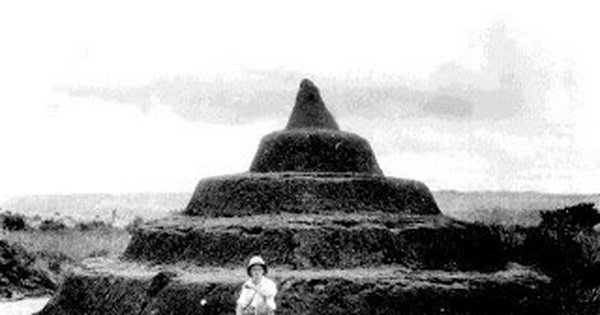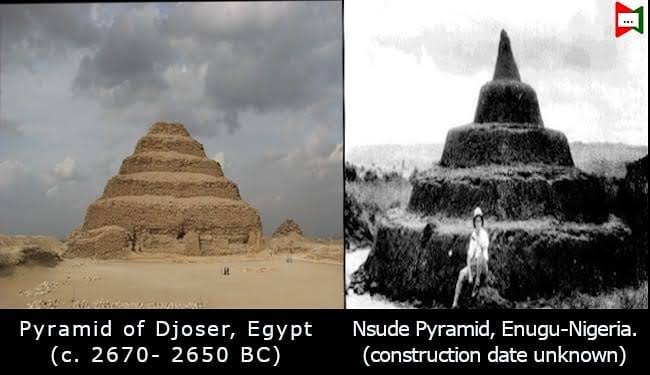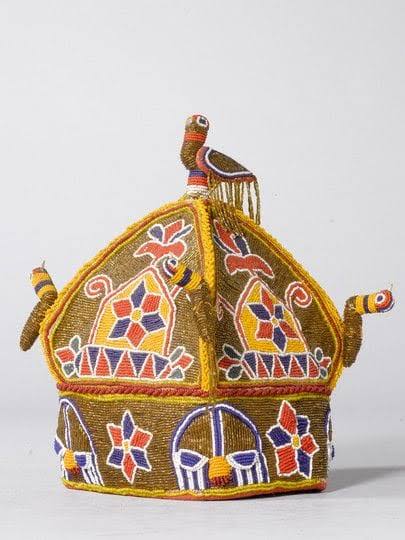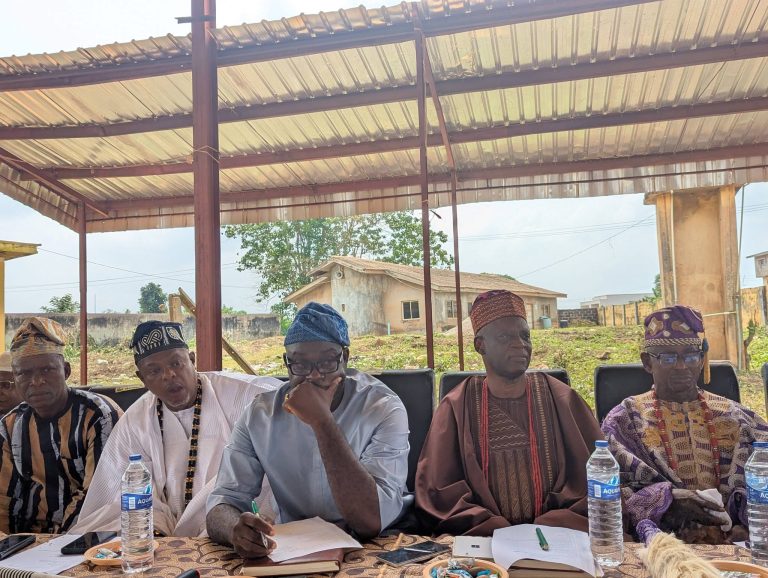
On the highlands of Udi in Enugu state, the Nsude pyramids which is also known as the Igbo pyramids once stood as a testimony to Black Africa’s level of cultural enlightenment.
Built with hardened red mud and clay, the structures lasted centuries until the 1930s when degradation followed by years of negligence, so much that today only their faint outlines can be traced.
A report on the monuments published in Wikipedia describes them as “one of the unique structures of Igbo culture”.
In 1935, British anthropologist and colonial administrator, G. I. Jones, took pictures of the pyramids when he was building up an extraordinary photographic record of Southeastern Nigerian culture when he stumbled upon the clay formed wonders.
Armed with his Roloflex camera, Jones took shots of the 10 circular stepped pyramids. The Nsude pyramids are however yet to be carbon dated, but judging by the black and white photos (taken in 1935), they are ‘very old’.
The first base section was 60 ft. in circumference and 3 ft. in height. The next stack was 45 ft. in circumference. Circular stacks continued, till it reached the top.
The structures were temples for the god Ala/Uto, who was believed to reside at the top stick was placed at the top to represent the god’s residence.

The structures were laid in groups of five parallel to each other. Because it was built of mud like the Deffufa of Nubia, time has already taken its toll on it.
Strikingly, these pyramids bear resemblance to the Step Pyramid of Saqqara, in Egypt constructed in 2648 BC.
On the highlands of Udi in Enugu state, the Nsude pyramids which is also known as the Igbo pyramids once stood as a testimony to Black Africa’s level of cultural enlightenment.
Built with hardened red mud and clay, the structures lasted centuries until the 1930s when degradation followed by years of negligence, so much that today only their faint outlines can be traced.
A report on the monuments published in Wikipedia describes them as “one of the unique structures of Igbo culture”.
In 1935, British anthropologist and colonial administrator, G. I. Jones, took pictures of the pyramids when he was building up an extraordinary photographic record of Southeastern Nigerian culture when he stumbled upon the clay formed wonders.
Armed with his Roloflex camera, Jones took shots of the 10 circular stepped pyramids. The Nsude pyramids are however yet to be carbon dated, but judging by the black and white photos (taken in 1935), they are ‘very old’.
The first base section was 60 ft. in circumference and 3 ft. in height. The next stack was 45 ft. in circumference. Circular stacks continued, till it reached the top.
The structures were temples for the god Ala/Uto, who was believed to reside at the top stick was placed at the top to represent the god’s residence.
The structures were laid in groups of five parallel to each other. Because it was built of mud like the Deffufa of Nubia, time has already taken its toll on it.
Strikingly, these pyramids bear resemblance to the Step Pyramid of Saqqara, in Egypt constructed in 2648 BC.

More fascinating is the similar replication of Nubian-like pyramids thousands of miles away from the Nubian area in the heart of Igboland.
Evidence like this indicates a strong level of correlation between the ancient Egyptians and the ancient Igbo.
Community leaders and historians have appealed in the past for the restoration of the circular pyramids.
Unless the government takes appropriate steps to reconstruct them, that historical monument will remain, perhaps, one of black Africa’s greatest losses to world civilization.
More fascinating is the similar replication of Nubian-like pyramids thousands of miles away from the Nubian area in the heart of Igboland.
Evidence like this indicates a strong level of correlation between the ancient Egyptians and the ancient Igbo.
Community leaders and historians have appealed in the past for the restoration of the circular pyramids.





